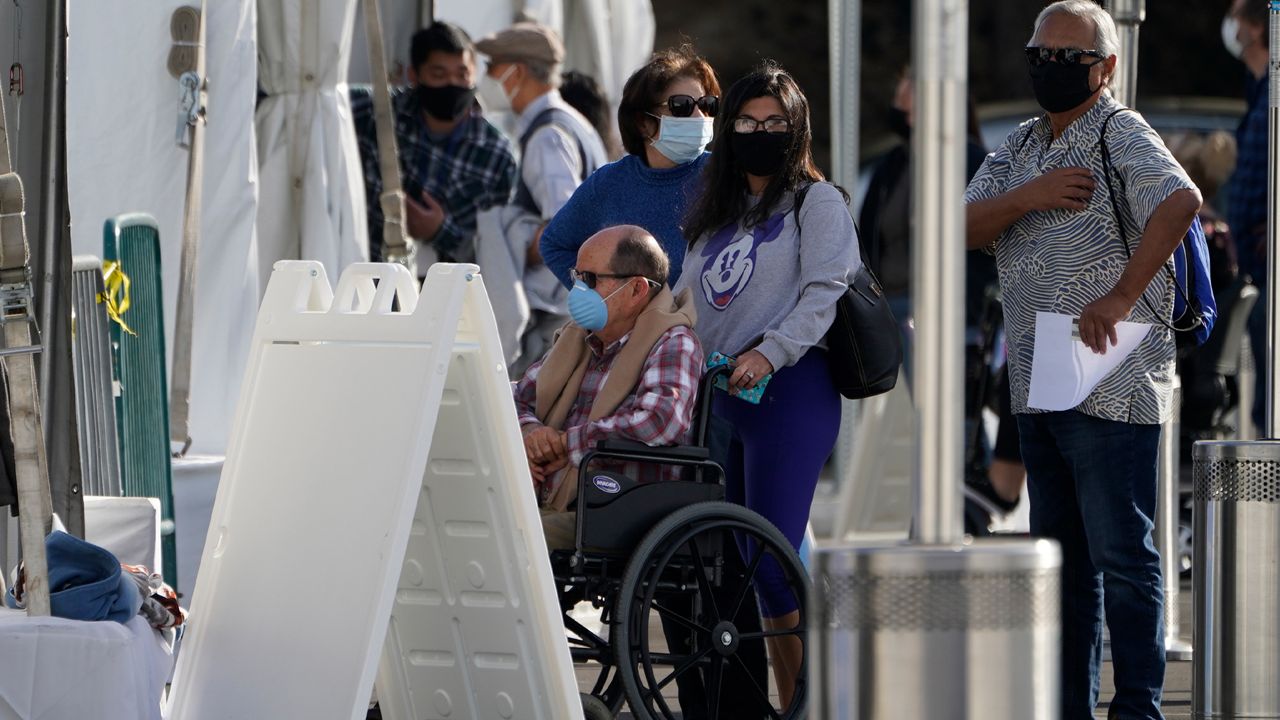ORANGE COUNTY, Calif. — Shruti Gohil’s job has been complicated. An infectious disease specialist with UCI Health, she has been part of a pitched effort to educate the public on the vaccines.
The White House forecasts that 300 million doses will have reached the public by July, but large portions of Americans still aren’t sure they’ll take it. Gohil said part of the problem is the messaging.
“It’s clear the hesitancy comes when people don’t know where to get good information,” Gohil said.
Orange County has a list of complicating factors covered in detail by a 22-page December report from the OC Health Care Agency. The report noted a list of factors that go into the likelihood of someone taking the vaccine, including age, race, and gender. It also noted differences among cities. Irvine and Newport Beach residents are 63% to 71% in favor of vaccination. Santa Ana and Anaheim — 49% to about 54% — are in the lowest range.
Some barriers are cultural, others political. Sometimes the message tumbles into linguistic ravines. Even the term “vaccine hesitancy” is not intuitive. The World Health Organization defines vaccine hesitancy as “the delay in the acceptance or refusal to vaccinate despite the availability of vaccine services.” The term covers people who aren’t sure they’ll take the vaccine all the way to people who have made up their minds not to. Some aren’t confident the vaccines are safe; others are complacent. Some can’t conveniently access a vaccine.
Health officials see a chance to make converts of people in this group. Gohil herself has been doing outreach, specifically at nursing homes, explaining the benefits of a vaccine to elderly patients.
But Gohil said revelations about how COVID-19 works have emerged throughout the pandemic. The development in understanding has also complicated how health officials deliver messages.
At the start of the pandemic, officials urged people not to buy masks to help preserve the supply for first responders and health care workers. California executed a near-total lockdown, including school closures. Restaurants were ordered to shutter temporarily.
Now, everyone in California is encouraged and, in some cases, required to wear a mask. Gov. Gavin Newsom said emerging health data suggest that children should return to in-person classes because they don’t spread the virus nearly as much as adults. And restaurants say outdoor dining doesn’t put customers at high risk of contracting the illness.
Consistent messaging has been interrupted by changes in medical understanding of COVID-19. But there’s also a sizable group of Americans who aren’t sure they’ll accept the two doses of Moderna when their name is called.
The Kaiser Family Foundation, a nonprofit, reports that 27% of the general public likely would not or definitely would not take a vaccine. For Republicans, the figure is 42%, and for some health care workers, it’s 29%.
Newport Beach Fire Chief Jeff Boyles said about 55% of his staff — about 115 people — have been vaccinated. And even though everyone in the department was eligible for a dose, some chose not to get one.
“We didn’t force them,” he said. “There are different personal reasons. Some felt they were already inoculated having already tested positive [for COVID-19].”
Data shows that contracting coronavirus does not guarantee immunity, Gohil cautioned. All the political, cultural, and linguistic barriers at play, Gohil said, are familiar.
“Getting people to be compliant on their medications is so hard,” Gohil said. “It’s one of the biggest areas we spend time on with our patients.”
And that’s with familiar illnesses like AIDS or heart disease, disorders with standard treatments that are not disputed.
The difference between those illnesses and COVID-19 is one of information. Infectious disease experts are still quantifying exactly how long the virus can survive on surfaces. Data explaining how well-infected patients are protected against another infection is still accruing. Gohil said it appears those with more severe cases of COVID-19 are better protected than people who show no symptoms. And she cautioned that even people who are asymptomatic could have a severe reaction in the future.
“The onus is on us as physicians and health care workers to correct incorrect information,” she said.
